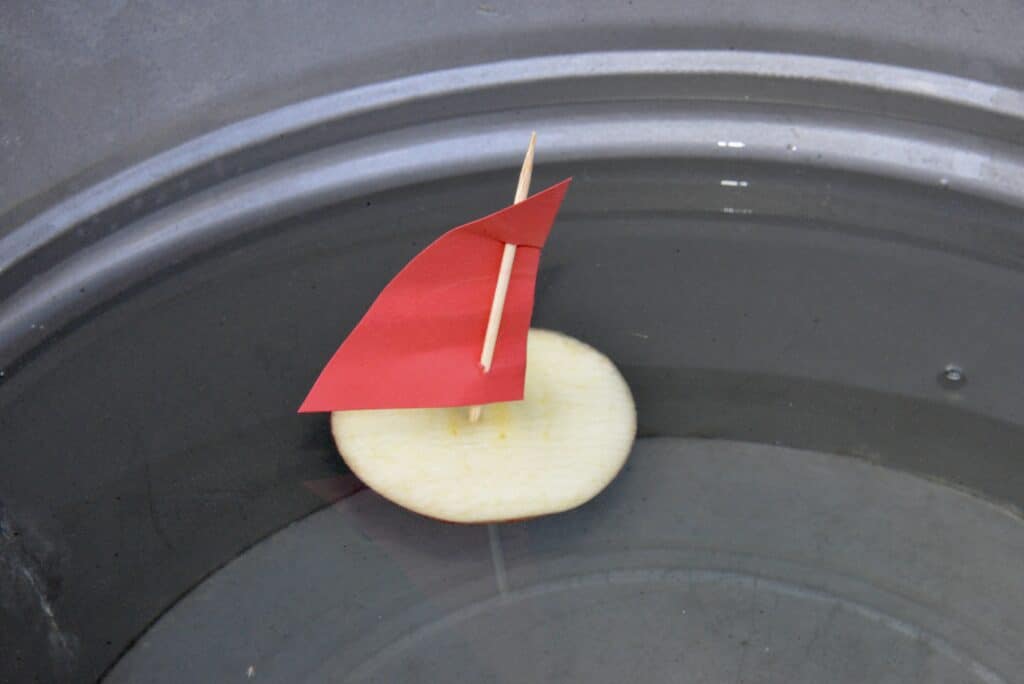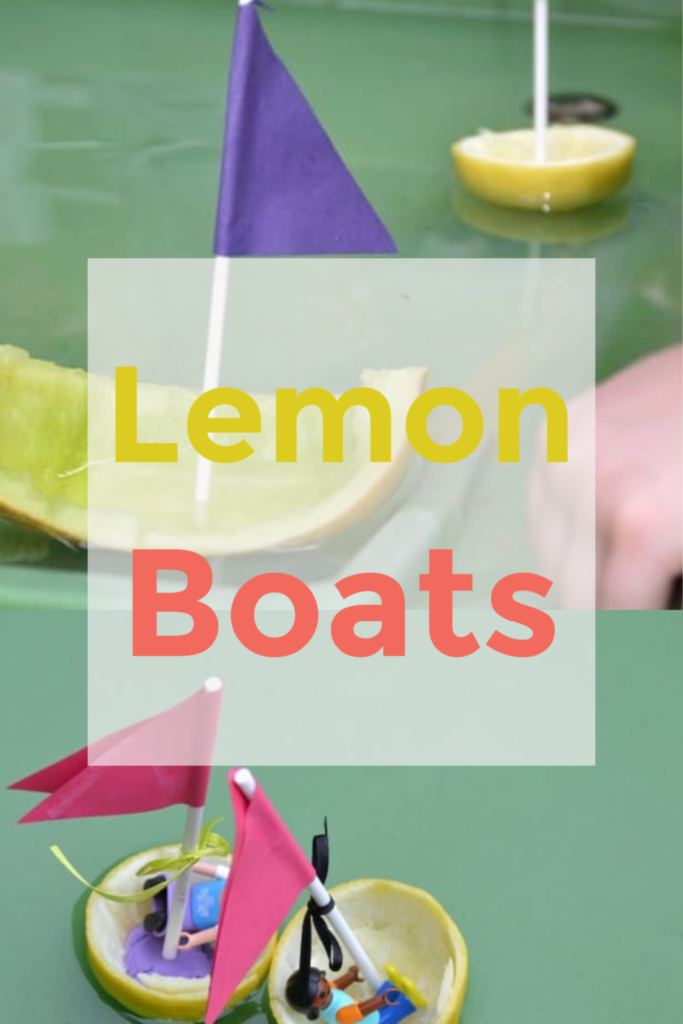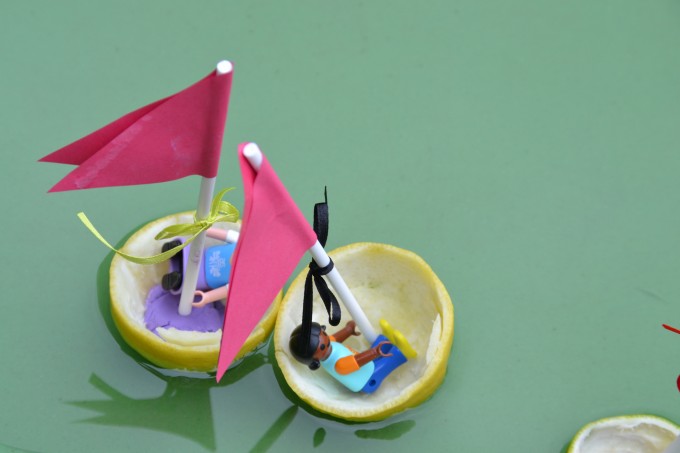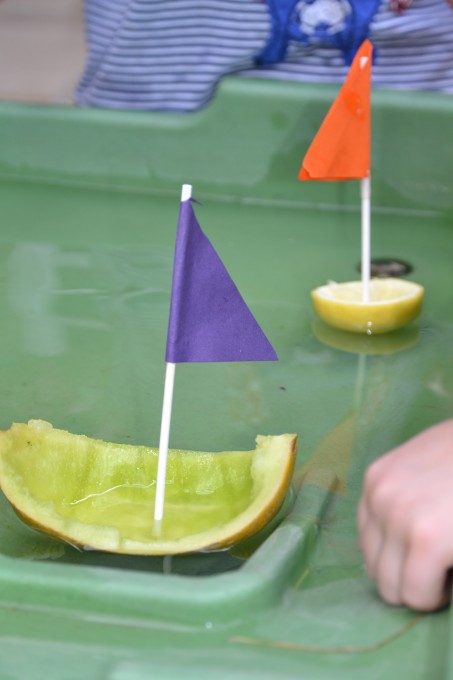Objects float when they are less dense than the fluid they are in. If you dropped a tennis ball and a marble into a bucket of water, the marble would sink, and the tennis ball would float. This is because a tennis ball is full of air ( it is not very dense ), and a marble is solid ( it is very dense ). Huge ships float because although they are extremely heavy, they have a lot of empty space inside. Lemons float as they have lots of air pockets in their thick skin. The inside of a lemon actually sinks!
What do you think of our fruity lemon boats?
What you need to make a fruity boat
- Lemons, limes, melon or anything else with thick skin.
- Small sticks – we used cake pop sticks
- Paper to make sails
- Double-sided tape – for the sails.
How to make a fruity boat
- First, hollow out the fruit; I managed to cut the lemon and lime so we could eat the fruit and still use them for the activity.
- Decide how to cut the fruit to make the best shaped boat.
- If the skin is thick enough, push the stick into the flesh. If not, use a bit of play-doh to keep it secure.
- Add your sail and see if the boat floats.
( ask an adult to help with the cutting )
We found our thin melon rind didn’t float at all, but the larger rind did float. Both lemon and lime boats floated easily.
Fruity Boat – Extension Activity
Try adding more objects to the boats. Do they still float or now sink?
Can you predict which boats will sink and which float before putting them on the water? Make a table to show your results.
What happens if you blow the boats? Can you have a race with a friend?
How can you make the boat change direction?
Can you make a boat from apple slices?

Suitable for Key Stage 1
Everyday Materials
Describe the simple physical properties of a variety of everyday materials
Working Scientifically
Observing closely, using simple equipment
Performing simple tests
Using their observations and ideas to suggest answers to questions
Suitable for Early Learning Goal 16
Exploring and using media and materials
Safely use and explore a variety of materials, tools and techniques, experimenting with colour, design, texture, form and function.
Don’t forget to try my other science ideas for Key Stage 1 too!

Last Updated on January 10, 2023 by Emma Vanstone



Very nice!